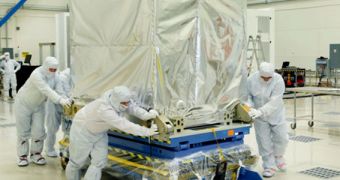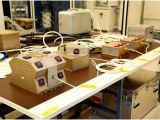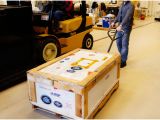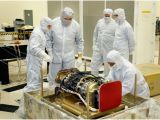Officials at the NASA Goddard Space Flight Center (GSFC) in Greenbelt, Maryland announce that four of the six instruments that will go on the Geostationary Operational Environmental Satellite R-Series (GOES-R) spacecraft have been completed and are ready for integration on the spacecraft bus.
This is the first GOES-R satellite, and NASA currently plans to launch it in early 2015. Construction and assembly are currently on schedule, with the four instruments being delivered to a Lockheed Martin facility in Denver, Colorado. The company is the main NASA contractor for the spacecraft.
The four instruments include the primary science tool on GOES-R, the Advanced Baseline Imager (ABI), which is a 16-spectral band analyzer that will focus on studying the planet's environment, oceans, and weather from low orbit. The other instruments are the Solar Ultraviolet Imager (SUVI), the Extreme Ultraviolet and X-ray Irradiance Sensors (EXIS), and the Space Environment In-Situ Suite (SEISS).
“Together these tools will improve [the US National Oceanic and Atmospheric Administration's] ability to observe weather from geostationary orbit in near real-time. These deliveries, and the start of integration with the spacecraft bus, demonstrate the continued strength of the program as it moves towards launch in 2016,” says Greg Mandt, the GOES-R system program director at GSFC.
The other two instruments that will be included on the spacecraft are the Magnetometer and the Geostationary Lightning Mapper (GLM), which are scheduled to arrive in Denver later this year.

 14 DAY TRIAL //
14 DAY TRIAL // 


